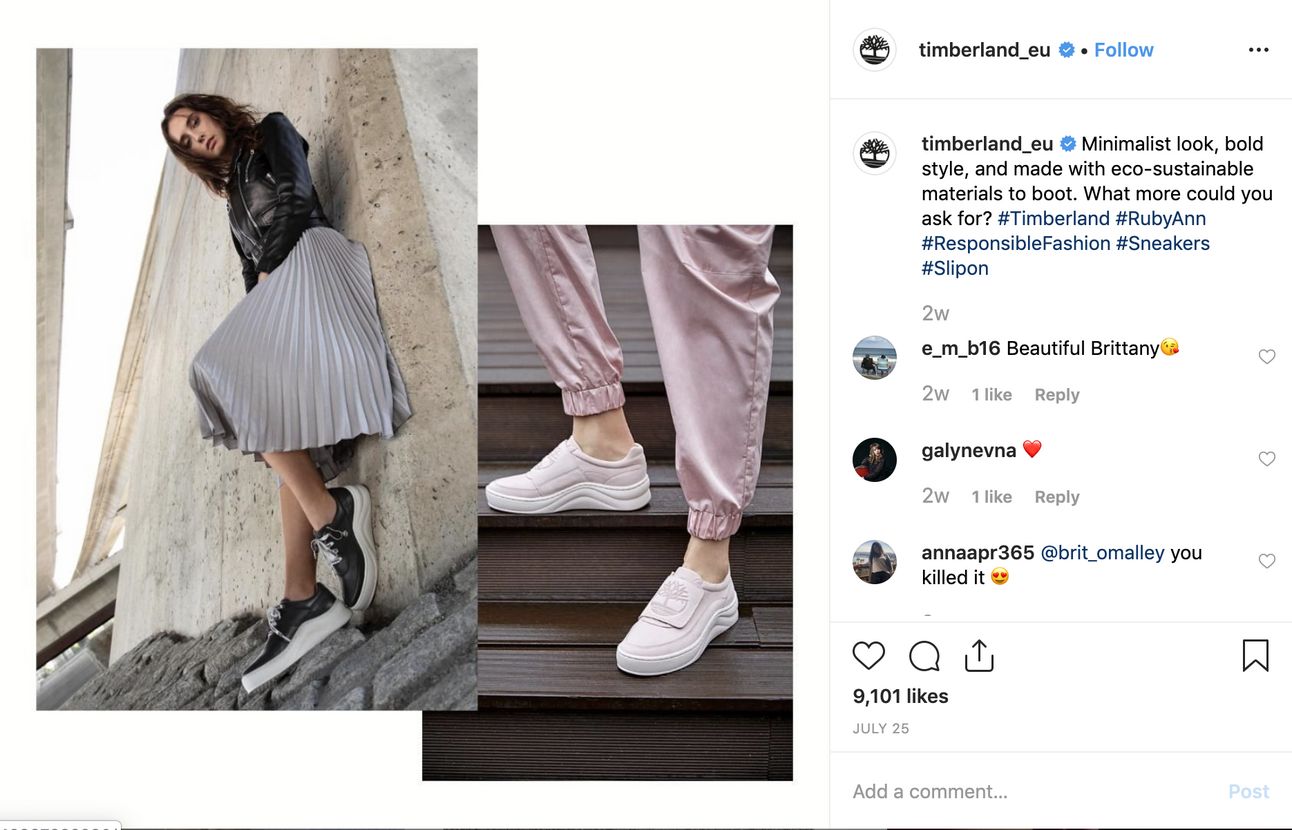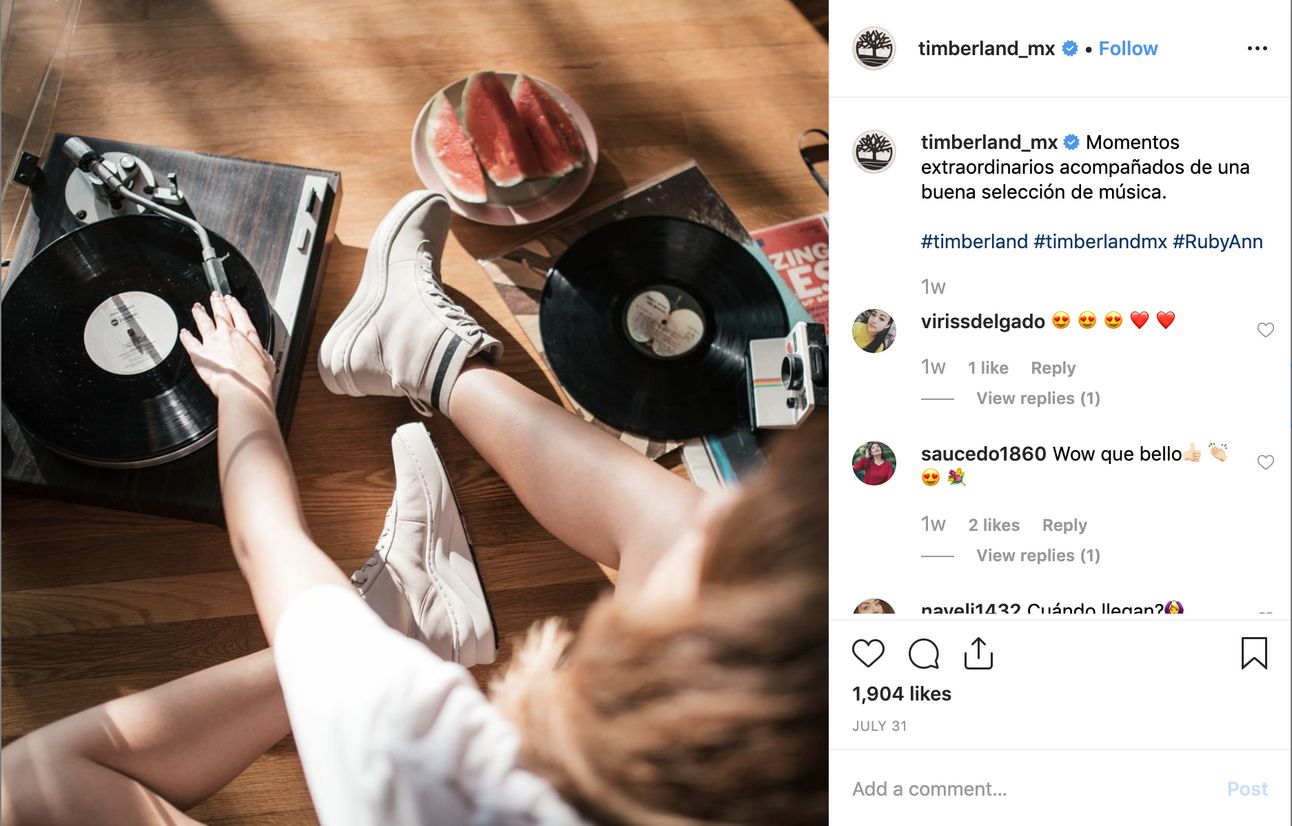- Creative Caffeine by Erin Bornstein
- Posts
- obsessing over trends is killing your brand
obsessing over trends is killing your brand
Stop chasing what's hot. Start leveraging what's yours.

obsessing over trends is killing your brand
ReBorn Designs / Read Time: 6 min
Most footwear brands are slowly erasing themselves.
I didn't truly understand the balance between commercial viability and brand authenticity—until I designed my first sneaker.
As a junior designer at Timberland, I was handed what seemed like a straightforward brief:
create a modern, $100 price-point sneaker collection for the Youth market.
Simple enough, right?
Wrong.
I went back to the drawing board more times than I can count. Each iteration felt like I was either creating a generic market follower or something so experimental it no longer felt like Timberland.
The market was saturated with trendy sneakers. Differentiating while staying commercially viable seemed impossible.
But here's the thing: this isn't just my problem. It's the footwear industry's biggest blind spot.
And it's costing brands millions in identity dilution.
In today's newsletter, I'm going to show you:
Why trend-chasing is a race to the bottom (and what to do instead)
How to identify your brand's unique DNA markers that consumers actually recognize
The exact process I used to create Timberland's commercially successful Ruby Anne Collection
How to translate heritage elements into modern, marketable designs
We helped Hush Puppies and DSW create the Amelia lace-up boot and earn the "Best Work Appropriate Winter Boot" award from Good Housekeeping. They outshined the competition.
Need more guidance on balancing brand DNA with commercial viability?
Hop on a free 30-minute Discovery Call & let's talk more.
Book a call here.

Most brands think chasing trends leads to success:
But the truth is, it's the fastest route to becoming forgettable.
They believe consumers want whatever is trending on Instagram.
The reality?
Consumers crave authentic brand experiences they can't get anywhere else.
Designers are told to "make it commercial" – which too often translates to "make it like everything else that's selling."
When every brand chases the same trends, we end up with retail floors full of indistinguishable products.
And in that sea of sameness, nobody wins.
Poll: Where does your brand currently stand? |
Balancing brand DNA and market appeal
The breakthrough only came when I stopped chasing trends and started looking at what made Timberland iconic in the first place.
I was overthinking it. The answer wasn't in trend forecasting reports or competitor analysis. It was in the brand's history.
"When I focused on integrating our signature elements – the collar, the wheat nubuck, the logo, and that iconic 6" height – suddenly everything clicked."
The Ruby Anne Collection became a case study in balancing heritage with innovation. We integrated lightweight EVA midsoles for comfort, rubber outsoles for traction, and premium leather for durability – all while maintaining those key Timberland visual cues.
The result?
A sneaker that was unmistakably Timberland yet modern enough to capture the Youth market we were targeting.

Turning Brand DNA Into Commercial Success: Footwear Edition
1. Define Your Brand DNA
Identify your footwear brand’s core values
(e.g., performance, sustainability, fashion).Pinpoint your unique edge (e.g., comfort tech, eco-materials, heritage design).
Craft a distinct brand voice—bold, innovative, or minimalist.
2. Create a Signature Visual Identity
Lock in consistent color schemes, typography, and packaging.
Develop high-quality, brand-consistent visuals—on-foot shots, lifestyle imagery, and campaign assets.
3. Align Messaging & Storytelling
Build a compelling brand story around innovation, craftsmanship, or cultural impact.
Ensure product descriptions and marketing copy reflect brand personality and values.
The Results Speak for Themselves
The Ruby Anne Collection launched globally across Asia Pacific, Europe, and North America, receiving robust marketing support and thousands of likes on Instagram.

What made the difference?
The collection didn't just chase fleeting trends. It leveraged Timberland's authentic heritage in a fresh, contemporary form.
While other brands continued creating generic trend-followers, this approach created something uniquely Timberland that still resonated with the Youth market.
When you lean into authenticity, the results speak for themselves.
Your Turn: Look at your current product line.
Can consumers immediately identify it as yours without seeing the logo?
If not, you're leaving brand equity on the table.What signature elements define your brand's visual language?
Identify them, then brainstorm three ways to translate them into contemporary designs.
Ask yourself: "Am I designing for the trend cycle, or am I designing for my brand's future?"
Cheers!
Erin

Powered by ReBorn Designs
PS: If you’re ready for more, here are other ways I can help:
If you have any questions, reply to this email.
Need more guidance? Hop on a Discovery Call & let’s talk more.
Follow me on LinkedIn for bite-sized tips throughout the week (free)